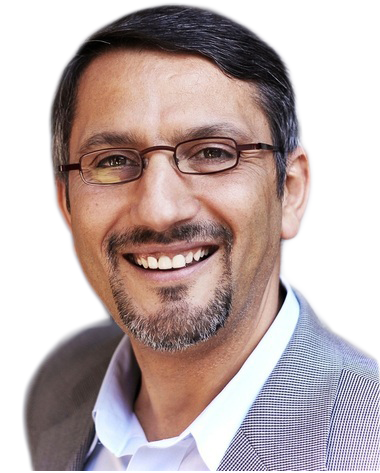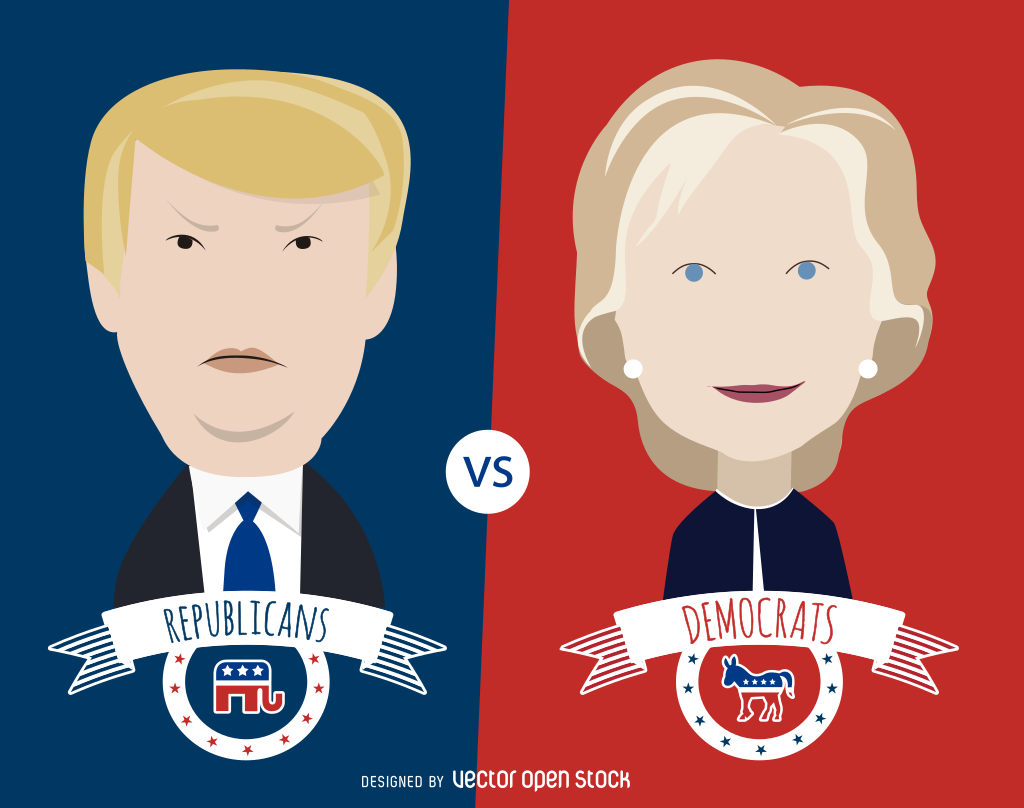The first U.S. presidential debate is already behind us and the day after, the American people are still as split as they were for the past 16 years. We find the country is divided on almost every issue: race and racism, gender and equal pay, immigration, war on terror, military expenditures, NATO, healthcare, economy, taxes, education, college financing, trade and social security to name the obvious. In reality, what is driving the split in the country is deeper and much more complex than the two candidates on the debate stage, Trump and Clinton. The current division is rooted in an ideological conflict centering on the direction for America’s future, the ongoing economic stagnation, how it happened and the best way to change it.
The groups that coalesced around Donald Trump, causing a deep rift in the Republican Party, assert that regulations, high taxes, big government and career politicians in Washington are the primary cause of stagnation and the increased heavy burden of debt. In addition, the chaos in foreign policy and diminishing U.S. standing on the international stage is blamed on President Obama and the weak Democratic leadership, as well as career politicians of both parties. More importantly, the problem of terrorism and Da’ish’s emergence from Syria and Iraq are a 24/7 blame game between the two parties as to who caused it and the best ways to handle it moving forward.
On Clinton’s side, the Democratic Party puts the blame on the rich and big corporations that have cheated their way into not paying taxes while constantly getting government handouts to drive their growth. The trickle-down economics have made it possible for a massive redistribution of wealth upward from the middle class that pours into the pockets of the rich. When it comes to foreign policy and U.S. standing abroad, the fallback position is to blame George W. Bush and past Republican administrations for failed interventionist policies. The invasion of Iraq and the ongoing chaos in Syria continues to cast a deep cloud over America’s political elites and finger pointing has been the chosen strategy for both parties.
The first presidential debate did not answer any of the above questions, offer solutions to the real problems affecting the population or solve the split in the country. As the long-awaited debate progressed, it was clear that the two candidates offered different readings of the past with Clinton, more than Trump, able to offer a set of concrete ideas but little else changed. The morning-after polls indicate that Clinton has won the debate and reversed the national momentum that witnessed Trump’s rising polling numbers in key battle states.
What is clear in America today is that the country’s political elites are unable to bridge existing ideological differences and the gulf between the two major parties is only widening. At the root of all of this division is almost 50 years of policy choices and transformation in America, which started in the middle of the 1960s and continues through the present. The[1] questions that the U.S. faces now are the similar to the ones that the U.S. faced back in the 60s: How to navigate issues related to race in the country? Is the problem one of law and order or racial and economic structural inequalities? What is the right balance between regulations and fostering economic growth? Who should carry the tax burden, and should big corporations and the rich continue to benefit from America’s strength while keeping billions in off-shore accounts? What is America’s role in the world and should the U.S. continue to expand military expenditures at a time of sky rocketing debt? How to deal with global warming and shift to different energy sources? Lastly, could the political leadership reach any type of agreement on immigration that can normalize the lives of more than 11 million people that entered the country illegally but have been a net gain for the economy?
America’s transformation since the 1960s is readily visible in every city and town across the country. The 1965 Immigration Reform Act and successive legislations since then have contributed to a transformation of the racial and ethnic makeup of America. This racial and ethnic transformation has caused deep anxiety, fear and, in some regions of the country, outright xenophobia and violence among a sizable section of the white population. Indeed, the tension around immigration reforms was also linked to the passage of the Civil Rights and Voting Rights Acts, which was seen as weakening whites’ hold on power and the narrative of a lost country gets stitched during the late 1960s.
In addition, U.S. failures in Vietnam that was followed by successive foreign policy debacles in the 1970s gave rise to Reagan’s campaign to rebuild the military and to out-spend the Russians in the arms race. Reagan’s massive military spending was further accelerated by involvement in the Afghanistan War, Iran-Iraq War, “low-intensity warfare” in Latin America and Africa and a return to robust CIA covert operations abroad. Critically, President Reagan was able to drive growth by this military spending, which was coupled with a massive deregulation of the financial sector and other parts of the economy. Strength through debt spending, removing support from social programs, education, healthcare while emptying mental hospitals wards into the streets and expanding the prison industrial complex accelerated the inequality gap in the country. Furthermore, the Reagan administration directly engaged in the global trafficking of drugs to support covert operations which set in motion the current chaos witnessed in America’s inner cities.
Trump and before him the Tea Party have managed to tap into this long-established stream of anger and frustration among white voters and drive it into the nomination. The Democratic Party under Bill Clinton himself shifted its agenda to the political right to appeal to Reagan’s Democrats so as to win the White House in the 1992 presidential election. This strategy worked to get Bill Clinton into two terms in the White House but it caused a collapse of the left wing of the party. The Democratic Party abandoned the poor and middle classes and during Bill Clinton’s years pursued a similar agenda to that of Reagan’s on the economy while reducing military expenditures.
Certainly, Reagan began the deregulation process, privatization, deficit spending and interventionist foreign policy, which was then adopted by Clinton through his Democratic Leadership Council. What America has is a two-party system with each party more alike than different and are beholden to massive special interests both domestically and internationally. The presidential debate did not even begin to address the fundamental issues that continue to disrupt the lives of so many Americans.
The road that got the country into this state of division and outright hostilities between various segments started a long time ago with both Democrats and Republicans equally responsible for the mess. It is not surprising to witness the lack of trust in America’s political elites but Trump and his current supporters are blaming the wrong crowed while identifying some of the real problems. The debate did not settle any issue at hand but it was a must-see theater of the absurd. Trickle-down economics, trickle-down justice and trickle-down racism will not solve the multitude of problems facing America. Sound bites are easy to scheme for when you play to an over-hyped and stoked audience but it will not offer a single solution to any existing problem since the root causes are not addressed and there’s doubt that anyone will do so in the current political climate.


